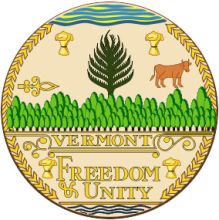
Fast, affordable Internet access for all.

A new state law is on the books in Vermont that supporters expect will encourage more investor activity supporting community broadband networks.
The new law, which took effect this past June, allows for the creation of “communications union districts,” enabling towns and cities to band together to form geographic entities dedicated to establishing fiber-optic broadband networks for their area’s residents and businesses.
A New Nomenclature
While Vermont towns have been able to work cooperatively via inter-local contracts, the new law is less cumbersome and uses a governmental nomenclature more familiar to most people—the union district. The union district governance model has been used for many years throughout Vermont, including by various utilities that have multi-town operations to handle, for example, sewer and water service.
Carole Monroe; general manager of the East Central Vermont Community Fiber-Optic Network (ECFiber), a consortium of 24 Vermont communities that have banded together to provide broadband service; told our Christopher Mitchell there isn’t much practical difference for her group operating now as the East Central Vermont Telecommunications District instead of by an inter-local contract.
“But I can say that in the municipal investment markets, they’re much more familiar with the municipal utility district, whether it’s a water district or sewer district or something along those lines,” Monroe told Chris in a recent edition of Community Broadband Bits podcast. “A municipal utility district is a common language for them. Inter-local contracts, not so much.”
ECFiber Grew From Inter-Local Contract
Irvin Thomae, chairman of the EC Vermont Telecommunications District board, agreed. He noted that seven years ago the east central Vermont communities created ECFiber through an inter-local contract. “But this (the inter-local contract) was unfamiliar to investors beyond our state borders,” Thomae told us.
“We needed a structure more capable of being recognized by large institutional investors. It (the communications union district) makes it easier for community broadband networks to appeal more for large investors.”
Jerry Ward, an ECFiber delegate from Randolph Center, earlier in 2015 urged residents of his community to vote to approve the governance change to a telecommunications utility district. He predicted in an opinion article in The Herald of Randolph, the union district model will be a boon for ECFiber:
“Most of the money we’ve raised until now has come in small multiples of $2,500. The governance structure allowed by a Telecommunications Municipal Utility District should help ECFiber attract larger investors at more favorable interest rates. We expect that reorganizing along the lines of a municipal utility district will make it significantly easier to borrow enough money to build out our network much more rapidly than the 50 miles/year we’ve averaged so far.”
During the past four years, ECFiber, under its inter-local contract, has borrowed more than $7 million from predominantly about 450 local investors, connecting nearly 1,200 customers in parts of about a dozen towns, along 200 road miles of fiber-optic cable. Its customers include residents, businesses and institutions. The vast majority of the 24 towns in the ECFiber district are communities of less than 2,000 residents with a handful boasting between 4,800 to 10,000 people.
Ward noted thousands of other residents still don’t have access to high-speed Internet. “The rate at which we (ECFiber) can grow depends almost entirely on capital,” he said. EC Fiber became a communications union district shortly after Vermont Gov. Peter Shumlin signed the new law on June 1, 2015.
ECFiber offers latest Internet speeds
Currently, ECFiber offers the latest generation symmetrical Internet access and a choice of five speeds (from 7 Mbps to 400 Mbps) that do not vary by time of day or according to the weather - as well as phone service with unlimited long-distance calling in the U.S. and Canada, according to its website.
Under Vermont’s communications union districts, the member towns can help facilitate the broadband networks with obtaining easements from property owners along the fiber-optic cable routes, including putting up poles and laying conduit. ECFiber’s union district board is comprised of one delegate per town with each community also able to send one or two alternate delegates to the board’s monthly meeting.
Under the new Vermont law, a communications union district, such as EC Vermont Telecommunications, isn’t allowed to assess taxes for the initiative. (Note: This was also true for ECFiber when it carried out its operations under its inter-local contract.) A communications union district’s revenue come from subscriber fees. Currently, the ECFiber district is generating about $125,000 a month in subscriber fees, Thomae told us.
Currently, while ECFiber is the only communications union district in Vermont, Thomae said he has had a few inquiries from other people in the state asking about the new governance structure.
Monroe said the creation of the ECFiber network has given people in Vermont’s rural east central region an alternative to DSL service, which usually is poor at best. For people not connected to a high quality network, fast and reliable Internet service also can be a problem because the East Central region’s mountainous terrain inhibits satellite service and reception from cell towers, she told us.
